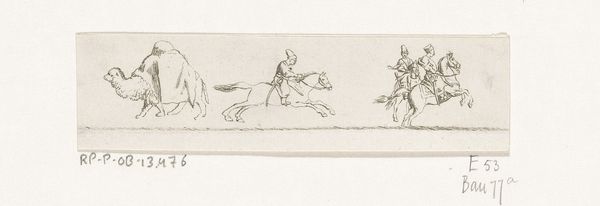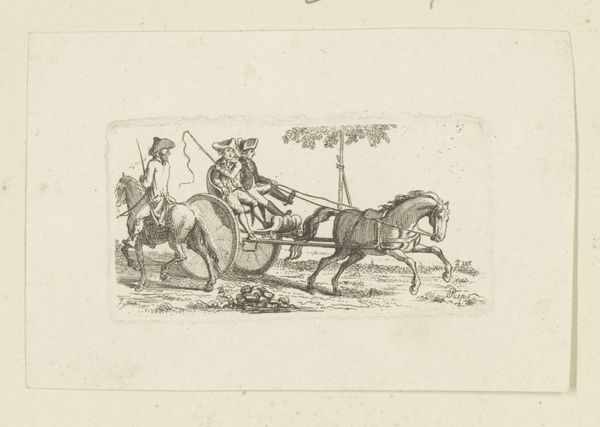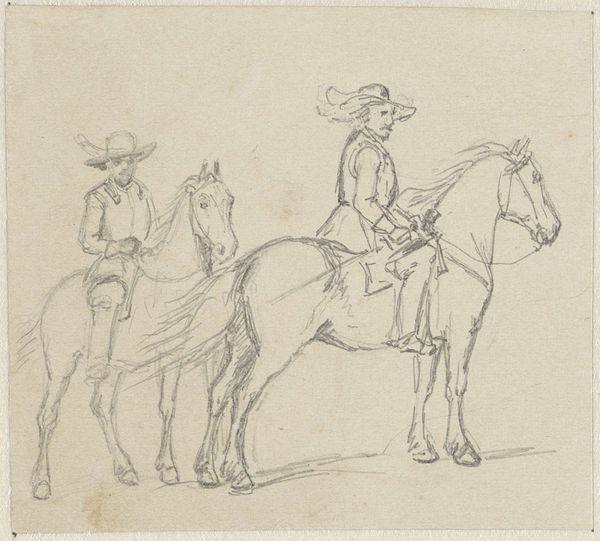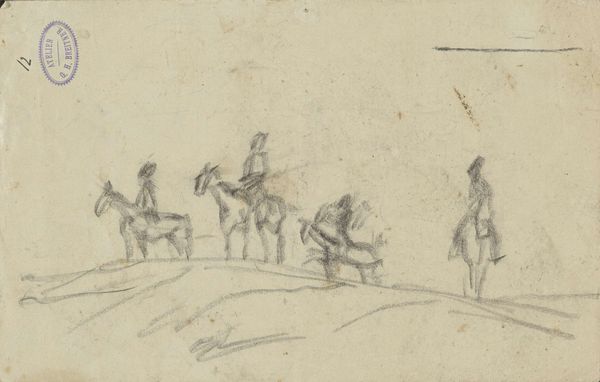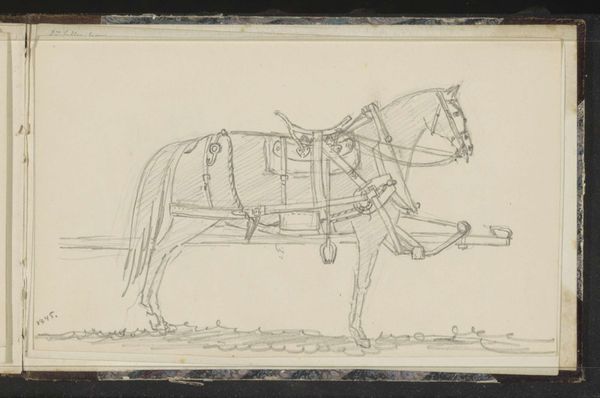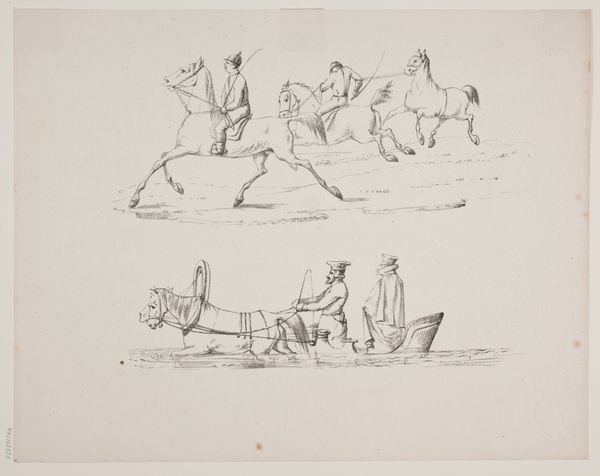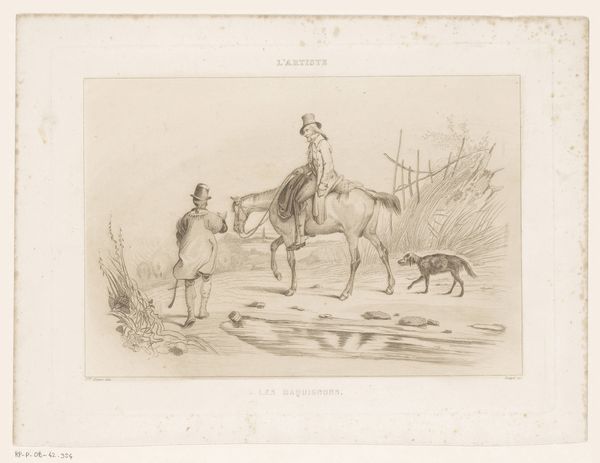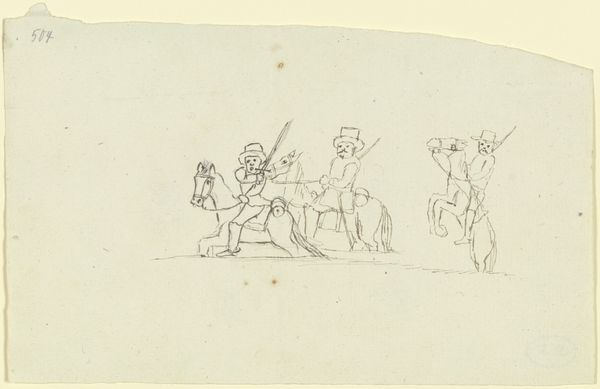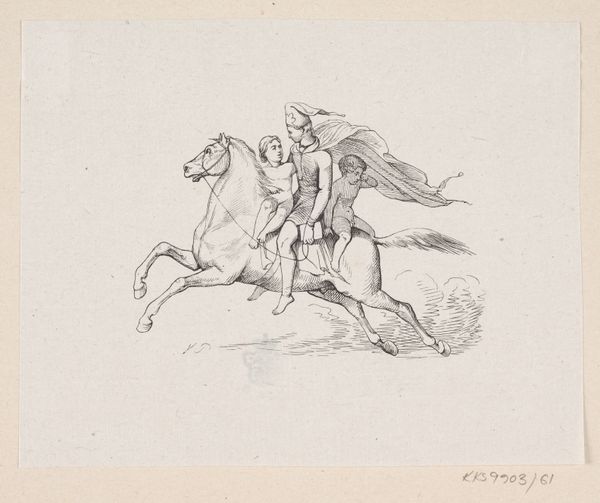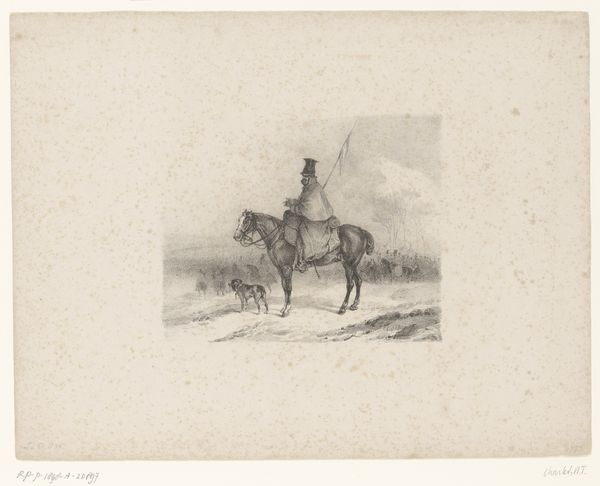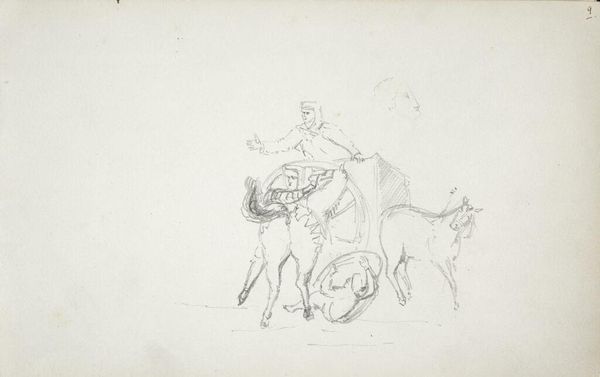
print, engraving
#
narrative-art
# print
#
caricature
#
old engraving style
#
figuration
#
romanticism
#
line
#
history-painting
#
engraving
Dimensions: height 42 mm, width 52 mm
Copyright: Rijks Museum: Open Domain
Curator: This engraving, entitled "Spotprent over Napoleons verbanning naar Elba," dates to somewhere between 1814 and 1816 and is attributed to Ernst Willem Jan Bagelaar. It's a fascinating piece of political satire rendered in simple lines. Editor: It certainly is spare, almost minimalist in its execution. It has a somewhat melancholy feel to it, wouldn’t you agree? Curator: Well, let's delve into that a bit. The primary materials here are copper or steel plate, ink, and paper. The engraver's skill in manipulating those materials to create a narrative speaks volumes. The lines themselves, etched into the metal and then transferred to paper, signify a whole production process. Editor: From an activist perspective, it’s hard not to see the implications of power, colonialism, and even enslavement embodied in this single image. We see Napoleon literally riding roughshod on another. This crude visual statement tells an implicit story about who is granted power and whose rights are trod upon, and who foots the bill. Curator: Precisely! And we can observe this through the stark visual shorthand here; it reduces complex relationships of empire to the bodies of men. It forces us to reckon with the cost of war at the time. Editor: I’d suggest further that its very dissemination speaks to something much larger; we have not simply an engraving but something created for circulation and to influence the public sentiment of the time. Who was meant to laugh at this? Who was meant to internalize the triumph over Napoleon? Curator: A question of manufacture then as much as aesthetics or theme. That is interesting considering the industrial context and social change that the work exists within. I also find myself wondering, how many impressions could Bagelaar have made before the plate wore out? And, what level of skill was needed to produce this image—and how was that labor divided? Editor: All those choices--from the style of etching to who has agency within it--contribute to a potent commentary on historical power relations. The means of image production always have their roots within their socioeconomic context. Curator: I am drawn to this print precisely for its simplicity, for its unadorned articulation of complex material conditions that we see at play, its testament to craftsmanship. Editor: And I appreciate its bold narrative but it speaks volumes about enduring social hierarchies as well.
Comments
No comments
Be the first to comment and join the conversation on the ultimate creative platform.
